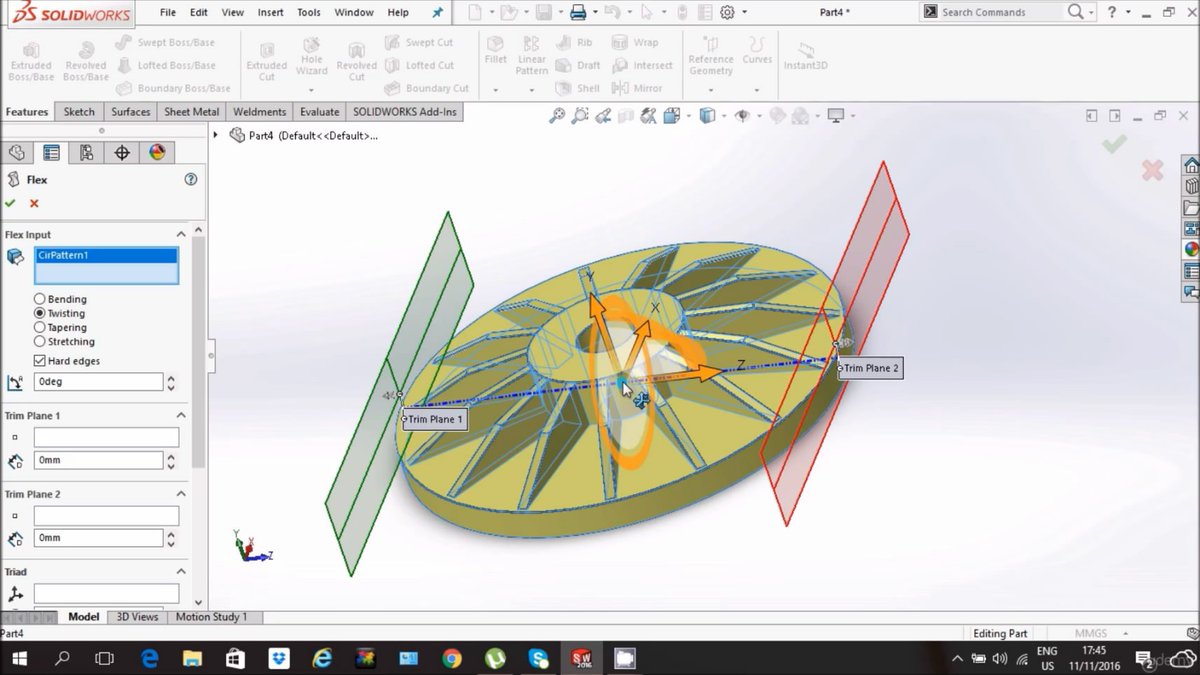As mobile devices become a primary computing platform for many enterprise employees, repairing or replacing smartphones and tablets at the local Apple or Microsoft store isn't a viable option for large enterprises.
While managed mobility services (MMS) have been around as long as mobile devices, until recently such services tailored to repairing and replacing mobile devices were immature. The consumerization of IT and the growth of bring-your-own-device (BYOD) policies as well as corporate-issued smartphones and tablets had left them unable to scale at an enterprise level.
At the same time, the myriad of mobile devices and mobile operating systems has made it difficult for IT shops to address issues associated with them. For example, Android fragmentation — both hardware and software — has led organizations to farm out device management in order to free up corporate IT resources for business projects.
Having internal IT shops support smartphones and tablets doesn't make sense for most enterprises — very large or very small, said Eric Goodness, a vice president of research in Gartner's Technology and Service Providers unit. Forward and reverse logistics — or the purchasing of new devices and the reuse of existing ones — are critical to enterprises, but it's simply too expensive to address these functions internally for a mobile workforce, Goodness said.
"It is so much easier and less expensive to push the sourcing-to-disposition life cycle to a third party," he said, citing "Genius Bar"-style services on enterprise campuses as a growth area for MMS providers.
repair and replace broken mobile devices managed mobility solutions Thinkstock
Jonathan Nikols, global head of HP's Device-as-a-Service, said he has seen an explosion of mobile devices among enterprise customers. "There are estimates that by 2020, there will be four devices for every employee," Nikols said.
[ To comment on this story, visit Computerworld's Facebook page. ]
"The question becomes how do you secure them all? They're multi-vendor in nature," he continued. "Apple and Android rule the smartphone market, but then there are multiple variations of Android hardware... and multiple OSes. How do you address all that with finite resources?"
For example, while one service provider may repair and replace hardware, it may not address software provisioning on new smartphones or tablets, or cover the onboarding of new employees. The employee may still need to go to IT to ensure all critical business applications and security protocols are applied to a device.
"Companies may look to an EMM [enterprise mobility management] integrator to secure devices, but that's not necessarily the same company you'd look to for repair and replace strategies," said Chris Marsh, a research director at 451 Research.
"The issue with mobility that we still have, even a decade after the first iPhone... is that software and hardware are still not integrated," Marsh said. "And, of course, business apps for use on those devices likely came from a whole different set of providers. There are just too many pain points."
[ Further reading: How to choose the right enterprise mobility management tool ]
Managed mobility services vendors have matured
In 2013, Gartner described the MMS marketplace as having no leaders or challengers, stating that "providers need to invest more in people, processes, tools and awareness to better serve a growing global demand."
Over the past few years, however, the MMS market has matured and scaled to the point where some providers offer both hardware and software services.
MMS providers can now address pools of globally distributed, corporate-liable and BYOD users, according to Gartner. Along with replacing or repairing hardware, services include acquiring mobile devices for employees, provisioning them with job-specific business applications, and ensuring that security protocols are in place.
In 2016, Gartner evaluated 14 vendors for its Managed Mobility Services Magic Quadrant. IBM and smaller, pure-play MMS vendor Digital Management Inc. (DMI) led the pack in their ability to execute on six deliverables, three of which specifically addressed repair and replace capabilities for smartphones, tablets and field service equipment with a focus on corporate-liable devices as well as BYOD users:
Sourcing and logistics management — the systems and services used to purchase, provision and activate mobile network services and mobile devices
Mobile service management — the systems and services to inventory and audit mobile network contracts and mobile devices; may also audit and log users' mobile network service usage and related performance and availability
Program and financial management — the ability to act as an agent on behalf of an enterprise with third-party providers, such as mobile network operators, independent software vendors, device manufacturers and device resellers, to conduct ongoing and project-based services on behalf of the user
In its short list of small vendors to consider, Gartner recommended VoxMobile and Mobi, along with DMI. In its list of large vendors, Honeywell, Vodafone, and HPE were included with IBM.
Managed Mobility Services Magic Quadrant Gartner
Gartner
Gartner's 2016 Managed Mobility Services Magic Quadrant.
MMS providers typically price their services as a monthly recurring charge per device, per user. Some providers also bundle project-based services (such as consulting), which generally are nonrecurring charges, into the monthly recurring charge.
"It is quite typical for MMS proposals to come in the form of a bill of materials, where each discrete service charge (for example, help desk, kitting, and sourcing and software release management) is presented as an individual charge," the Gartner report stated. "This is also the preferred model, as it offers cost transparency."
Businesses may still be challenged to find a single service provider that consistently delivers all the IT and business process services they may require at a global level. Enterprises may need multiple service providers or third-party program management where multiple services are integrated under one umbrella, according to Gartner's report.
How managed mobility services work
Some vendors offer MMS as part of general device-management programs. Last year, HP launched its Device-as-a-Service (DaaS) offering, which can provide and manage desktops, laptops, phones and tablets for its customers through partnerships with various hardware and software providers.
"In our DaaS program, a customer will select a device... and then we have a support plan that provides the break and fix maintenance attributes, the implementation and installation, accidental damage and recovery and media retention," Nikols said.
HP determines the contractual relationship enterprises want to have, whether it's with a value-added reseller, a global systems integrator or a direct relationship with HP, "and then we provide it back to you within a utility model or a per user, per device pricing model," he said.
For example, the cost of a contract would include an SLA on how fast the turnaround time on a device repair and replacement is — whether it's next day or four days.
When an end user's device breaks or is in need of replacement, they file a help-desk ticket just as they would with any IT shop, but the ticket is automatically routed to the HP DaaS service.
HP's DaaS service also handles employee onboarding an offboarding.
"If it's a new employee, they would go through their HR onboarding processes, and through our relationship, the requirement for that order would be triggered into our systems, and we'd work through our contractual obligations based on SLAs," Nikols said. "So, we'd have that ready for them at their desk day one as a business-ready device."
The device comes from HP with all the latest patches and firmware.
HP can also provide analytics to collect data on how mobile devices are being used. For example, the cloud analytics can detect how heavily a device's processor is being used, what applications have been downloaded to the device and which ones are used most often, and even the last time an application was opened.
"We then provide that information to customers in the form of different reports," Nikols said. "That helps with security monitoring. Did the employee disable the firewall, for example? Are they aware that certain apps are causing a device to crash?"
Tangoe, an MMS-specific provider, purchases hardware up front, which it warehouses in order to use as replacement units for its customers while it sends out mobile devices for repairs or permanent replacements. The company refers to its service as "technology lifecycle management," and it takes a "fleet approach" where it's both carrier- and OS-agnostic.
"You have to look at simplicity," said Craig Riegelhaupt, Tangoe's director of product marketing. "Can my end user activate this without having to go through a huge amount of internal approvals or handshakes? In other words, is there a procurement system embedded?"
As with HP, Tangoe has the ability to image a mobile device with all the business applications and permissions a corporation requires based on an employee's role.
It can provide service contracts for corporate-issued devices as well as a choose your own device (CYOD) policy, where the end user chooses the device they want but it is still under the scope of a corporate mobile device management strategy.
"It's basically the ability to provide a level of service based on the entire mix of equipment an employee has," said Kenneth Noel, director of operations at Tangoe.
As with some other MMS programs, Tangoe monitors the mobile device throughout its life cycle, so if it's lost or stolen, it can be tracked and reported back to the corporate IT department. And at the end of a device's life, when it's turned in, Tangoe can furnish certificates to show it's been wiped of all corporate apps and data.
Gartner's Goodness pointed to Sprint's Mobility-as-a-Service offering, launched in 2015, as having "nailed it" as a "straightforward proposition" in MMS. Through its MaaS program, Sprint owns the mobile device, the management systems and even the network (cellular) contracts, and the customer just pays a monthly recurring charge per device. There are no mobile network contracts to manage, so there's no service desk to resource and no software entitlement issues to manage, Goodness said.
"Capital expenses and headcount disappear in favor of an operating expense," Goodness said. "We are now seeing MaaS providers look to bundle in [Microsoft] or Google or other collaboration and productivity apps as part of the bundle. Frictionless mobility. That is the future."
Five steps for developing an MMS strategy
What should enterprises do when developing a repair and replace strategy? Marsh from 451 Research recommends these steps:
Do an inventory of devices. Make sure you know the devices deployed and what their status is. Are they company-issued devices, stipend-based BYODs or CYODs that are under the scope of your corporate mobile device strategy?
Segment users and devices. Know whether mobile devices are for field service jobs with critical business apps running or for general knowledge workers who may not need expedited repairs or replacements.
Evaluate the capabilities of potential service providers. Do they offer hardware, software or both? Fundamentally, you'd like both. Check to ensure that providers offer SLAs that include not only turnaround times on hardware repairs and replacements but also software provisioning.
Educate the workforce on what their expectations should be. Should they expect next-day turnaround, or will you be providing a loaner device while theirs is being repaired or replaced? Standardize rules around how that works for your employees.
Ensure that the service pricing model is right for your company. Look for flexible pricing models. Some companies may want to consider a finance arrangement where they don't buy a device outright but pay it off over its life cycle to avoid heavy up-front costs. Others may want to consider the total cost of ownership and whether it's more advantageous to allow the service provider to own the hardware.









